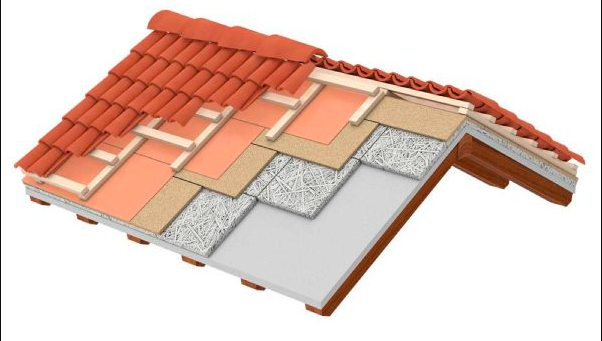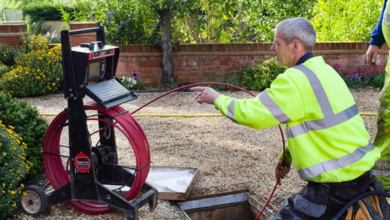How to Choose the Best Roofing System for High Wind Areas

Living in a high-wind area requires special considerations when it comes to roofing. The roofing system must be able to withstand strong gusts and severe weather conditions without compromising the safety and integrity of the home. We will explore how to choose the best roofing system for high-wind areas, focusing on materials, design features, installation practices, and maintenance. By understanding these factors, homeowners can make informed decisions that protect their property from wind damage and ensure long-term durability.
Understanding Wind Ratings and Roofing Materials
Wind Ratings Explained
Wind ratings are crucial in determining the suitability of a roofing system for high-wind areas. These ratings indicate the maximum wind speed a roofing material can withstand without damage. Roofing materials are tested under controlled conditions to determine their resistance to uplift forces and other wind-related stresses. Choosing a roofing system with an appropriate wind rating ensures that the roof can endure the specific wind conditions in your area.
Suitable Roofing Materials
Several roofing materials are particularly well-suited for high-wind areas. Metal roofing is highly durable and offers excellent resistance to wind uplift. It is available in various styles, including standing seam and metal shingles, providing aesthetic appeal and functionality. Asphalt shingles with high wind ratings are another popular choice, as they are designed to lock tightly together, preventing them from being lifted by strong winds. Additionally, clay and concrete tiles, while heavier, provide significant wind resistance due to their weight and secure attachment methods.
Read also: How Weather Impacts Roof Damage and Repair Services
Importance of Proper Installation
Secure Fastening Techniques
The installation method is just as important as the choice of materials. Proper fastening techniques are essential to ensure that the roofing system can withstand high winds. For instance, using screws instead of nails for metal roofing increases the holding power, reducing the risk of panels being lifted by wind. Similarly, asphalt shingles should be installed with extra nails and adhesives along the edges and corners to enhance their wind resistance.
Professional Installation
Hiring a professional roofing contractor with experience in high-wind areas is crucial. These professionals understand the specific installation requirements and building codes for such regions. They ensure that all components, including flashing, underlayment, and fasteners, are correctly installed to provide maximum wind resistance. A well-installed roof performs better during wind events and reduces the likelihood of costly repairs and replacements in the future.
Design Features to Consider
Roof Shape and Pitch
The shape and pitch of the roof can significantly impact its ability to withstand high winds. Roofs with a steep pitch are generally more aerodynamic and less likely to experience wind uplift than flat or low-slope roofs. Hip roofs, which have slopes on all four sides, tend to perform better in high-wind areas than gable roofs, which have slopes on only two sides. Incorporating these design features can enhance the wind resistance of the roofing system.
Edge and Ridge Reinforcements
Edges and ridges are vulnerable points on a roof during high-wind events. Reinforcing these areas with additional fasteners and adhesives can prevent wind from lifting the roofing materials. Ridge vents and edge flashing should be securely attached and sealed to prevent wind-driven rain from penetrating the roof. These reinforcements play a crucial role in maintaining the roofing system’s integrity under high wind conditions.
Regular Maintenance and Inspections
Importance of Maintenance
Regular maintenance is essential to ensure that the roofing system remains in good condition and continues to provide wind resistance. This includes cleaning debris from gutters and downspouts, trimming overhanging branches, and inspecting the roof for any signs of damage or wear. Addressing minor issues promptly can prevent them from escalating into major problems during a windstorm.
Scheduled Inspections
Periodic inspections by a professional roofing contractor are recommended, especially after severe weather events. These inspections help identify potential weaknesses or damage that could compromise the roof’s performance. Contractors can check for loose or missing shingles, damaged flashing, and other issues that may not be visible from the ground. Regular inspections and maintenance can extend the roofing system’s lifespan and ensure that it remains capable of withstanding high winds.
Insurance Considerations
Adequate Coverage
Homeowners in high-wind areas should ensure that their insurance policy provides adequate coverage for wind damage. This includes coverage for the roofing system and any potential interior damage caused by roof failure. Reviewing and updating the policy as necessary can provide peace of mind and financial protection in the event of wind-related damage.
Documentation and Claims
In wind damage, proper documentation is essential for filing insurance claims. Taking photographs of the damage, keeping records of maintenance and inspections, and obtaining repair estimates can facilitate the claims process. Working with a roofing contractor who is familiar with insurance claims can also help ensure that all necessary documentation is provided and that the claim is handled efficiently.
Conclusion
Choosing the right roofing system for high-wind areas involves carefully considering materials, installation practices, design features, and maintenance requirements. By understanding the importance of wind ratings, selecting suitable materials, ensuring proper installation, incorporating aerodynamic design features, and maintaining the roof regularly, homeowners can significantly enhance the wind resistance of their roofing system. Additionally, adequate insurance coverage and proper documentation can provide financial protection in the event of wind damage. Taking these steps ensures that the roofing system protects the home from wind-related damage and contributes to its overall durability and longevity.





